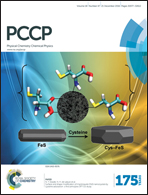The inside-out supercapacitor: induced charge storage in reduced graphene oxide†
Abstract
Iontronic circuits are built using components which are analogous to those used in electronic circuits, however they involve the movement of ions in an electrolyte rather than electrons in a metal or semiconductor. Developments in these circuits’ performance have led to applications in biological sensing, interfacing and drug delivery. While transistors, diodes and elementary logic circuits have been demonstrated for ionic circuits if more complex circuits are to be realized, the precident set by electrical circuits suggests that a component which is analogous to an electrical capacitor is required. Herein, an ionic supercapacitor is reported, our experiments show that charge may be stored in a conductive porous reduced graphene oxide film that is contacted by two isolated aqueous solutions and that this concept extends to an arbitrary polarizable sample. Parametric studies indicate that the conductivity and porosity of this film play important roles in the resultant device's performance. This ionic capacitor has a specific capacitance of 8.6 F cm−3 at 1 mV s−1 and demonstrates the ability to filter and smooth signals in an electrolyte at a variety of low frequencies. The device has the same interfaces as a supercapacitor but their arrangement is changed, hence the name inside-out supercapacitor.


 Please wait while we load your content...
Please wait while we load your content...